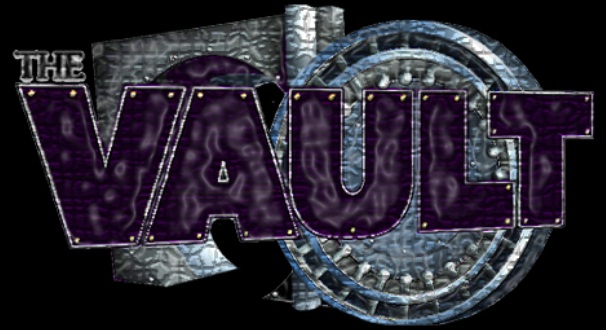Recently I was discussing racing with a friend when it became apparent to me that we were seeing things from two totally different perspectives. As a driver, he was looking at the situation with his interests and opinions at heart. As someone who works for a speedway, I was seeing it with the track’s interests in mind.
The result was that we could agree to disagree, but there was no acceptable common ground to be found. He saw it differently than I did, and until I put myself in his shoes and looked at it from his perspective his opinion made no sense to me. But one thing was obvious, in that though we failed to agree on who was correct and who was not, we knew we had to work together or both of us would have nothing to discuss.
The relationship between track owners and promoters, race car drivers, and fans, is a delicate balancing act. Local racing depends on all three sides of the relationship to work together to some extent in order to be healthy and happy, but sometimes that balance gets a bit out of whack. When that happens, typically one or more sides of the relationship will suffer, and if it does not find a way to get put back into balance eventually all sides will suffer.
This relationship begins with any of the three sides because all are as important as the others. Each plays a role and brings a unique addition to the whole. Track owners and promoters provide a venue, spending their money and time in the effort to put on a show that the fans will come and see, and that will attract drivers to their facility. The drivers want to race, and look for a place to do so in order to pursue their hobby and have some fun in the process, and they pay the track in order to do that. And the fans want to see some exciting racing and need both the track and the drivers to provide it, and they also pay for the right to enjoy the races.
The track makes money from the fans and the drivers in order to pay it’s employees and it’s bills, and some of that money finds it’s way back to the drivers in the form of payouts. And while that payout money in no way covers the expenses that a racer incurs, it is at least something in return for a job well done. The fans also get something back, both in the way of a place to come and see racing and in the show that they get to see. And if all balances out and goes according to plan, the track gets to keep some money to either reinvest in the facility or to take home as profit.
From the perspective of a fan, sometimes it appears that the tracks are asking far too much in order for them to see what they came to see. And if one looks deep enough they may have a point, or they may not. Again, there should be a balance between operating expenses and what the fans have to pay, and then maybe have a little extra off the top for the owner take home as profit. Fans tend to complain if that burger costs too much or the gate admission seems a little steep, and who can blame them? We all work hard for what we earn and we want to keep as much of it as we can. Everything has a cost, and the bottom line should be whether the product we receive equals or exceeds the amount we pay to get it.
The drivers also have a beef with the speedway. From their point of view it appears that they are paying the speedway in order to provide the show that the fans pay to come and see, and it is no wonder that they become a bit irate when you see it from that perspective. In their eyes the track is being double paid, first by the fans and then by them. They believe that the track should be more thankful that they come and provide a show which in turn attracts the fans to the track, and that track should thank them by either charging them less or giving more of it back. Some drivers go so far as to believe that the track should charge them nothing at all, and even pay them for the service that they provide.
After all, isn’t the track making money off all of those people who are up there watching the races? That’s where the money for operating the track should come from and not the drivers, right? The drivers are the show, so the tracks should be paying them! From a driver’s point of view that argument seems logical, but from the track’s point of view there is little logic in it.
Track owners and promoters have a totally different view of things. They see the expense of providing a facility for the fans and drivers to enjoy, plus they see the need to have something to take home as profit too. After all, if the track were not there the drivers would not have a place to race, and the fans would all be at home watching NASCAR. Track owners see the numbers and know what it takes in order to balance the budget, and they know that only a portion of what it takes to operate a track comes from the gate and concession sales. And that balance is also in need of adjusting, as less fans in the stands translates into a need for more money to come from other sources, namely the drivers. And as the tracks see it, the drivers and fans should be thankful that they get to come to the racetrack instead of shopping at a Wal-Mart or something else built in it’s place.
Although all sides of the relationship have differing needs and perspectives, all want basically one thing, that being more for less. Fans want to see more quality racing for less money. Drivers want to go racing for less money, plus try to cover their expenses as well. And the tracks want more fans in the stands, more drivers in the pits, and more money in the cash drawers, and yet not go broke trying to spend money in order to make money. And when it comes down to the bottom line, none of the three sides of the relationship is getting rich off of the situation.
By stepping back and looking at the complete picture and how it all works together, we can gain a better understanding of what makes the system work. But in order to do that, we also need to put aside our own perceptions and opinions, and attempt to be objective in our views. That is a very hard thing to do, especially if we feel that we are somehow getting shorted in the relationship.
Perhaps a better, but probably just as difficult, way of looking at the situation is to step into the role of one of the other sides in the equation. By doing that and seeing it from the perspective of others, maybe we can better comprehend why each side feels the way that they do, and come up with better ways to maintain the balances that our sport depends on for survival.
So how do we get into each other’s heads and figure out what we all are thinking? Communication is a huge part of that, and in some ways communication is the mechanism that keeps it all balanced and level. The first part of communication is learning to express our thoughts and feelings without complaining, yelling, bad mouthing, or getting angry. Certainly the other sides do not want to hear what we have to say if we cannot express it civilly. And in return, we all need to listen to what the others are saying. And that means really listen instead of simply appearing to listen for the sake of politeness. Take in what is being said, think about it, and respond with something other than a generic answer.
Communication by itself will not solve problems or right past wrongs, but it can be a tool that allows us to work on those things as a team, even though each of us is doing it for our own selfish reasons. And communication also enables us to better give and take as we work together, thus making the process smoother and more worthwhile. And with any tool, it makes getting the job done that much easier to accomplish.
The absolute bottom line in all of this is that we all need each other in order for local racing to survive. If one part of the equation is lost, then it all falls to pieces and we all lose. With that in mind, it seems logical that we learn to agree to disagree, and somehow manage to make the system work as it has worked for decades.
Certainly some of us may not be able to work together for whatever reason, but the lack of cooperation from a few individuals should not cancel out the cooperation of the rest of us as a whole.
Racing depends on us and how well we maintain the balance for it’s survival.
BJ CAVIN currently announces and writes for Ocala Speedway in Florida. His personal blog is on MySpace.


 His Column, “A Closer Look with BJ Cavin†appears on Real Racin USA each Tuesday.
His Column, “A Closer Look with BJ Cavin†appears on Real Racin USA each Tuesday.




